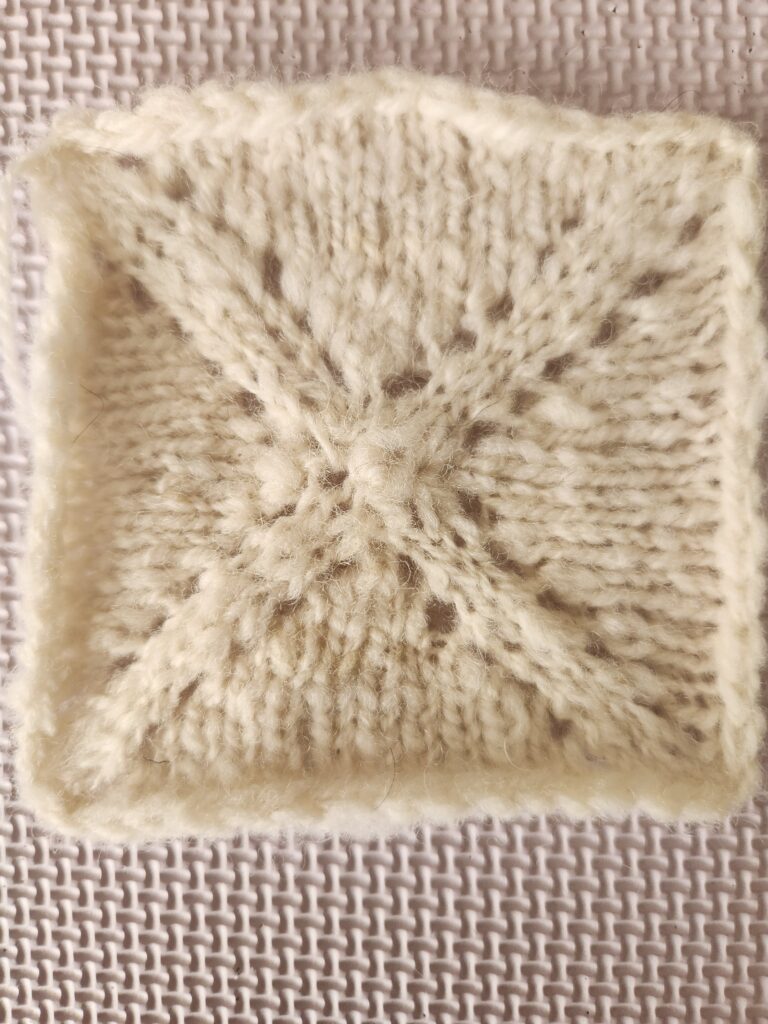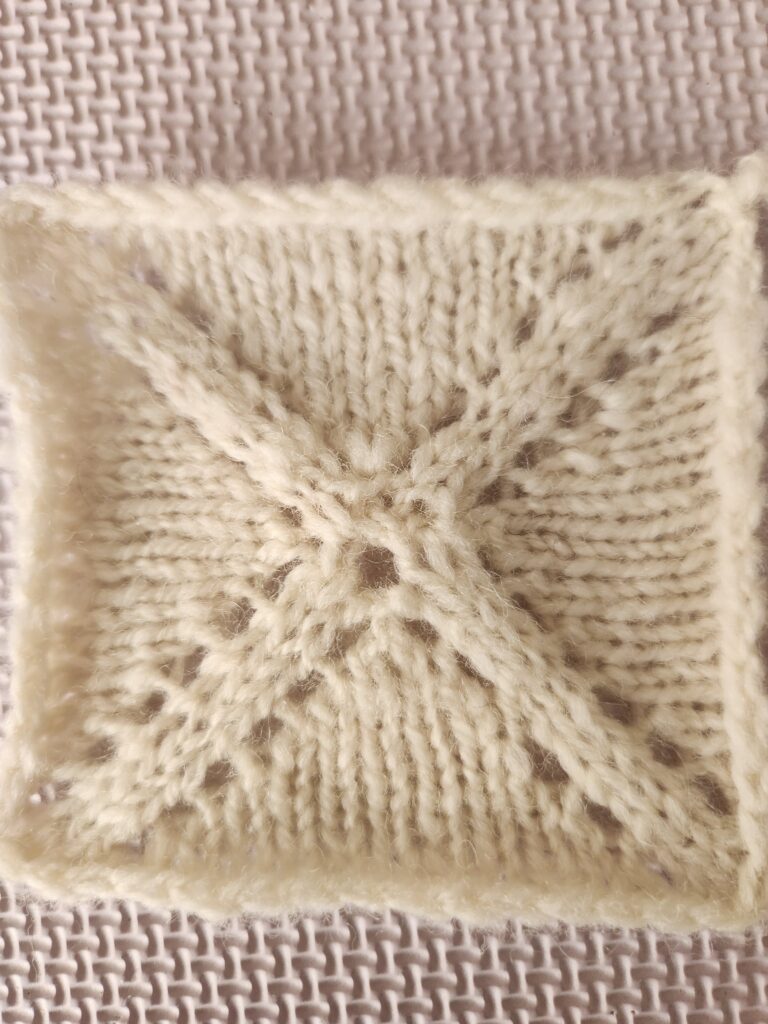In June 2024, the Treadles to Threads Amazing Multi-Breed Spinning Experience (T2TAMBSE) wool-of-the-month was Dutch Texelaar, brought to us in a suitcase from the Netherlands by Ingrid. We commented on the number of neps in this wool – not unusual in the wools we have sampled, but notable in any case. While discussing, Sheila and Jane wondered how a round of combing or carding might affect the wool. (We had been told that carding would just make the neps worse). We decided to embark on a Science Experiment – A Science Fair project almost.
What we started with
The wool had lots of neps and quite a bit vegetable matter.
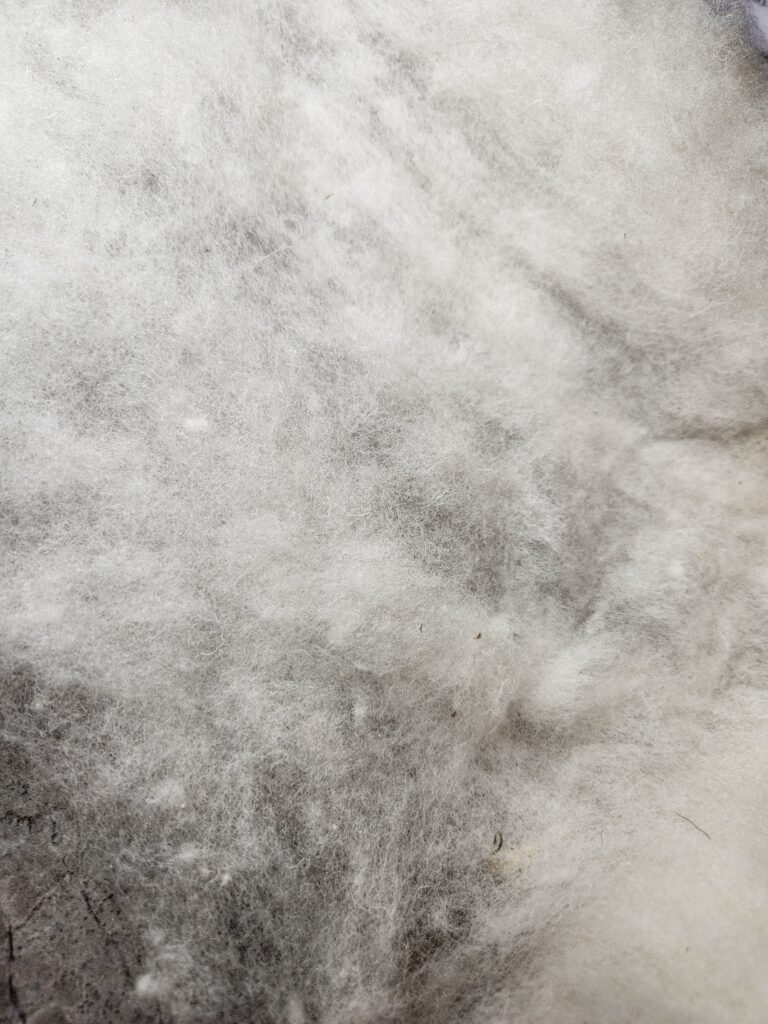
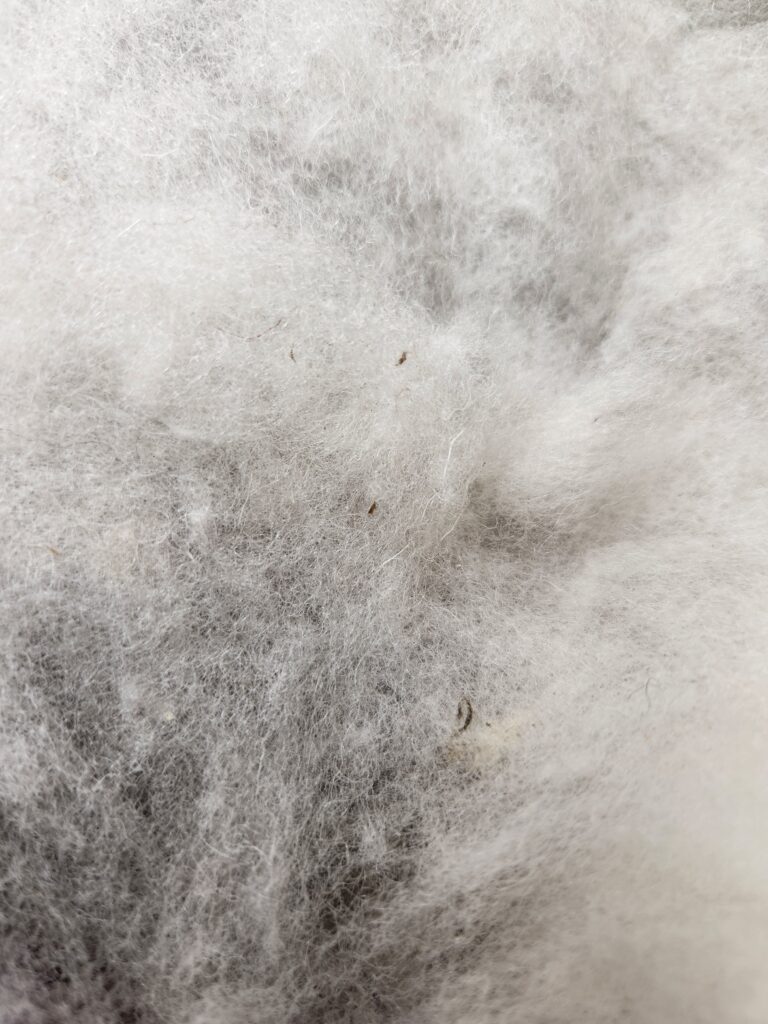
Spinning
We each spun between a half ounce and an ounce of the Texelaar as it was delivered to us. Coincidentally, we both had spun the Texelaar on drop spindles, so we felt we had equivalent yarns.

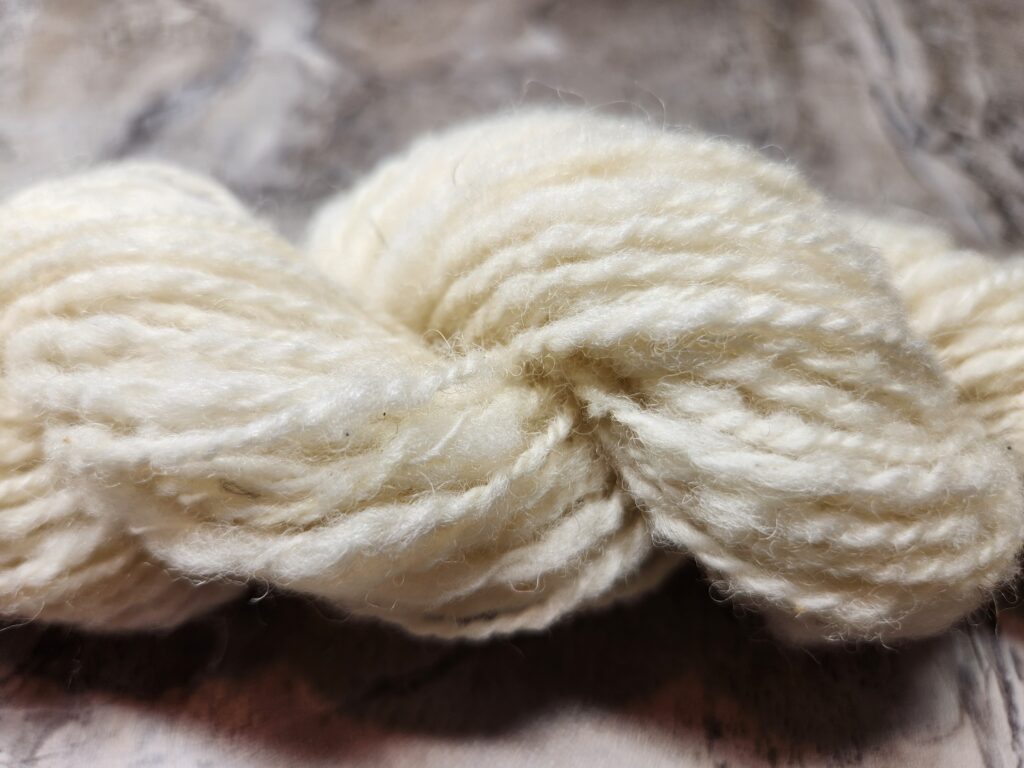
Carding and Combing
Jane carded some of the wool, and Sheila combed some of the wool. We were interested to see 1) how much would be lost to carding and combing, 2) if either carding or combing were more effective, 3) if there was more loss to carding or combing.
How much was lost to carding? about 30%
How much was lost to combing? about 30%
Some spinners complain about the amount of wool lost to combing, but really, what is removed is not great for spinning! Here are what we called “the dregs”.
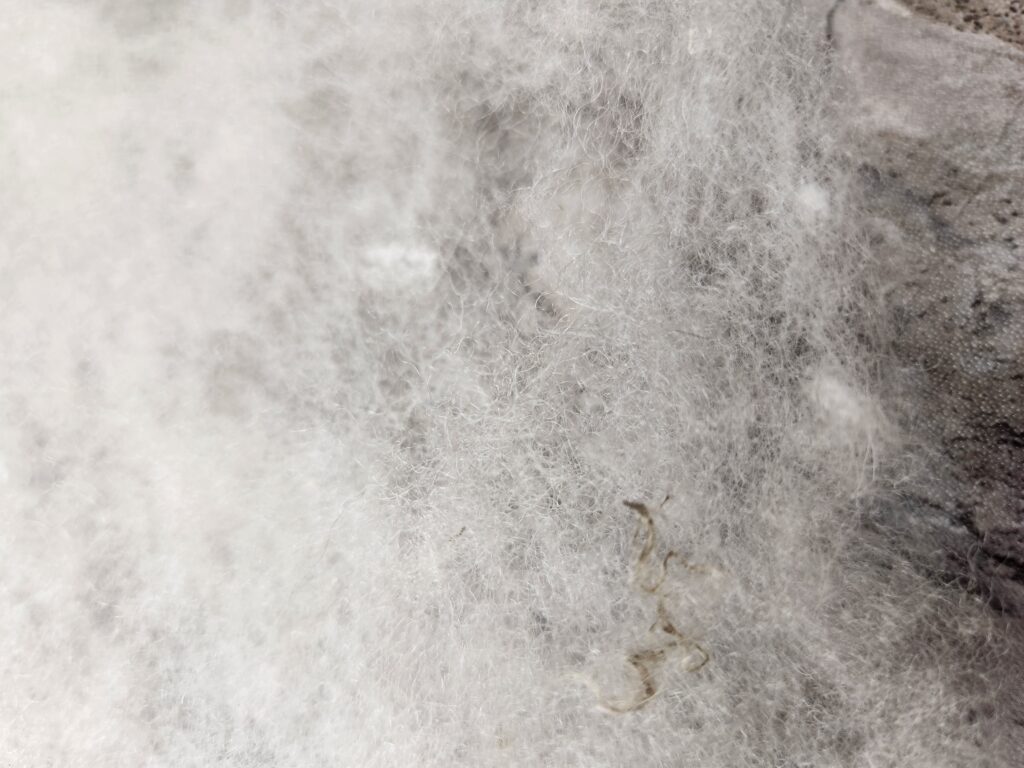
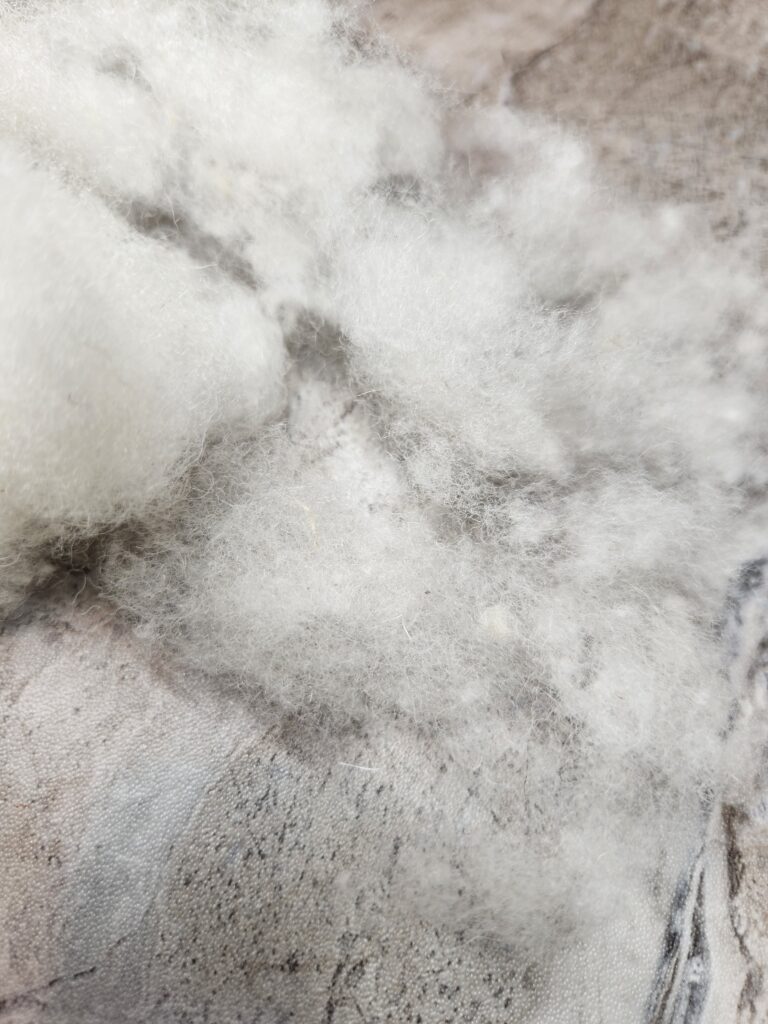
What we ended up with
After combing and carding, we had cleaner, smoother wool to spin.
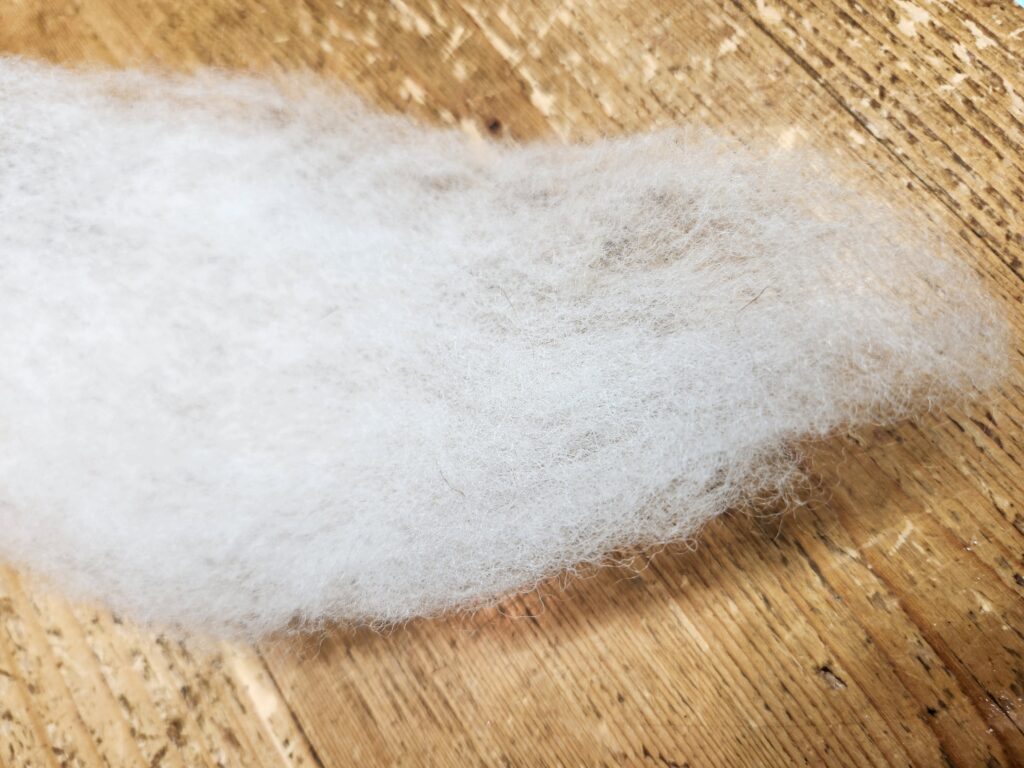
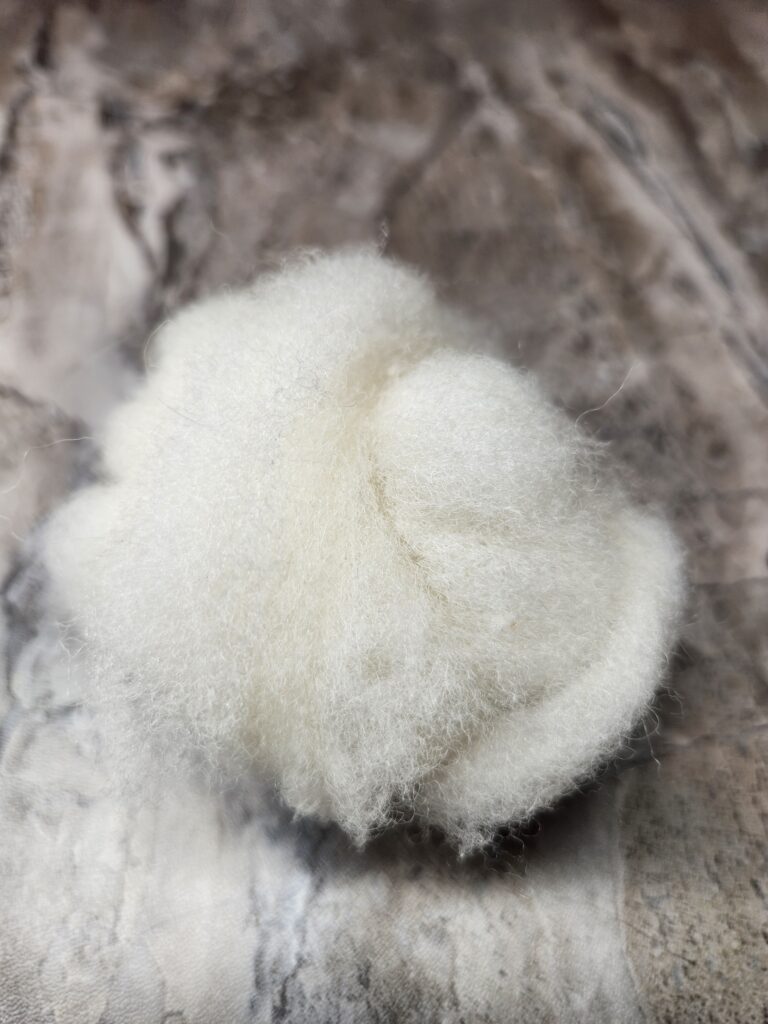

More spinning
Since we had spun the original wool on drop spindles, we spun the carded and combed wool on drop spindles.
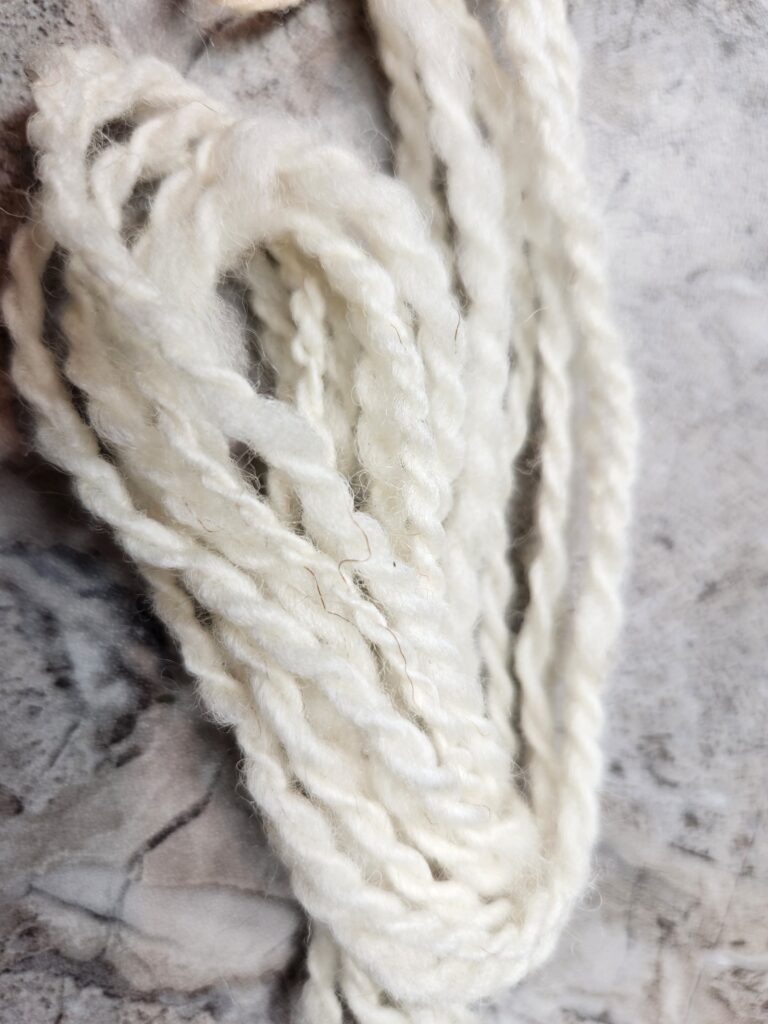
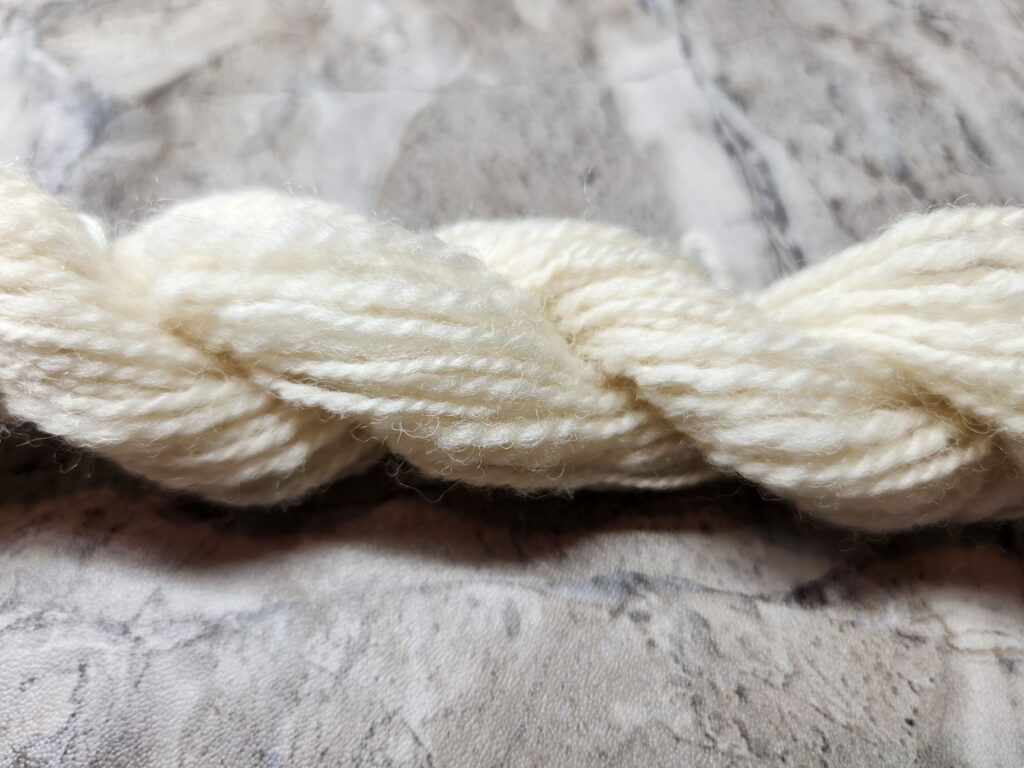
Knitting
We found that when we had spun the yarn and skeined it up, it didn’t look like there was much difference. For a final test, a square was knit from the original spun yarn, and the yarn made from the wool after combing. Here you can see the difference in texture of the yarns. The neps are not necessarily BAD, but they create a fabric with different texture.
